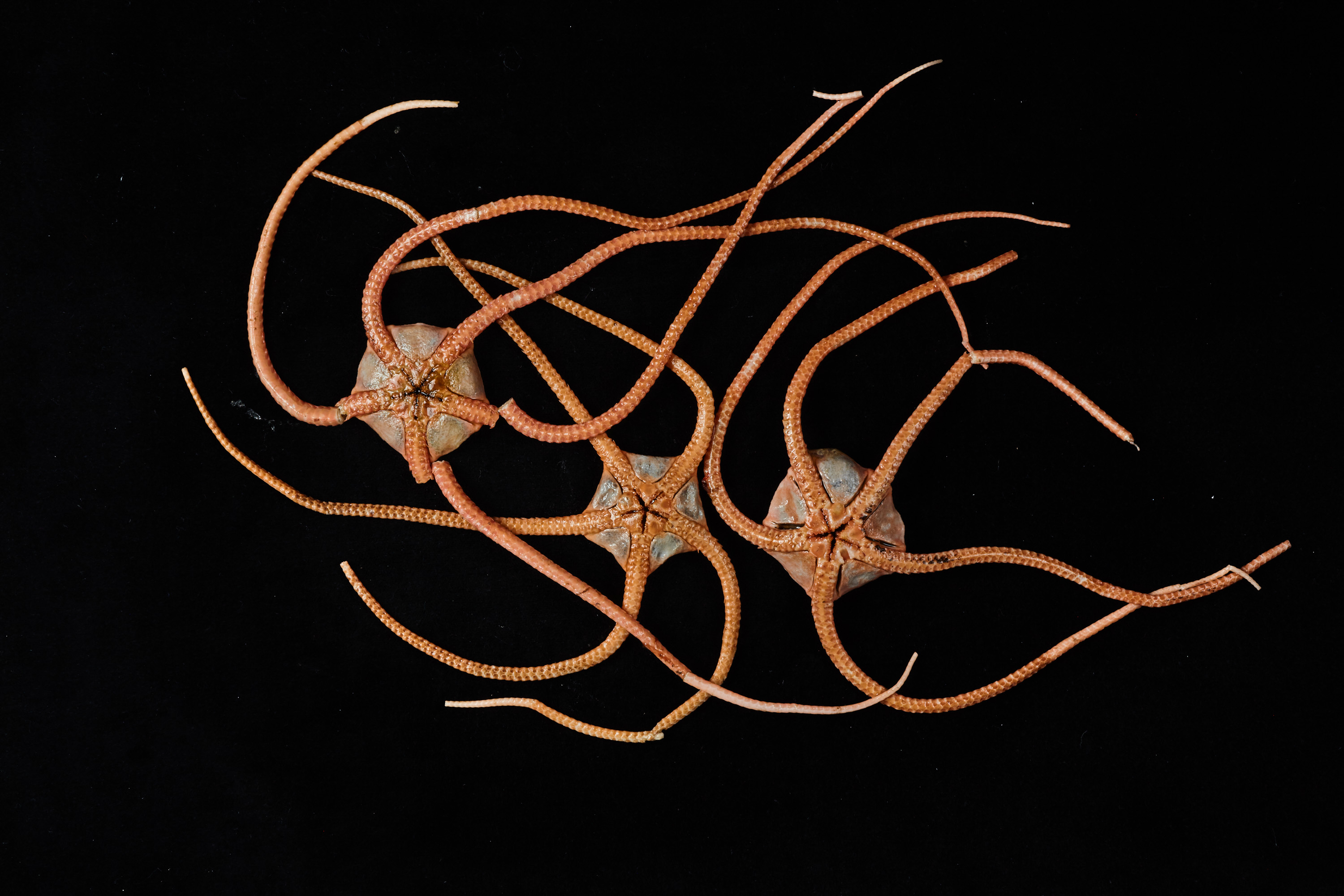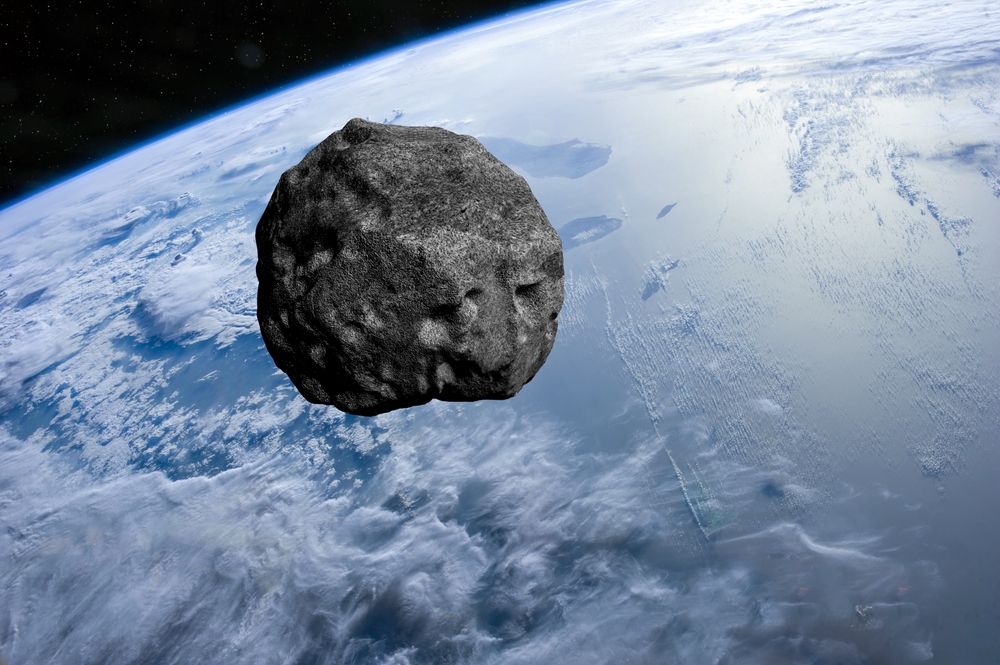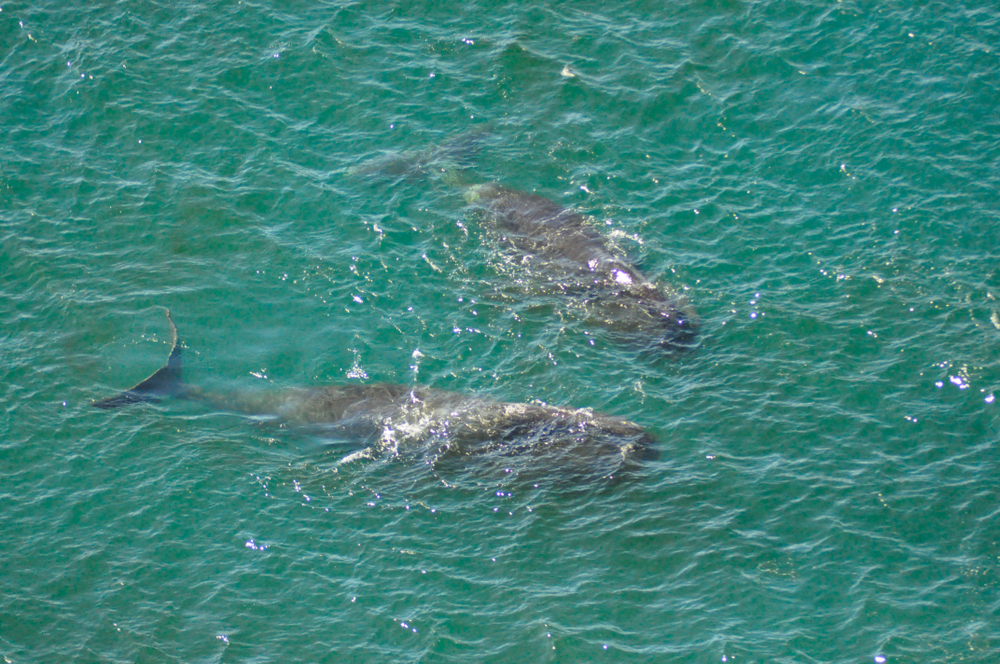Vue lecture
This trilobite fossil became ancient Roman bling
Spiky, Star-Shaped Creatures Show the Deep Sea Is a "Connected Superhighway"

Airplane-Sized Asteroid Will Fly Past Earth Next Week, Sparing Us From an Impact

Toxic Algae in Whale Poop Warns of Warming Seas in the Alaskan Arctic

Once Believed to Be Junk, Viral Ancient DNA Has Been Ghost Writing Our Genetic Code

UK’s Spaceflux is building a catalog to plug space situational awareness gaps

LONDON — United Kingdom-based space surveillance company Spaceflux hopes to introduce a catalog of space objects next year, one that could rival data kept by the United States Space Force and provide satellite conjunction warnings if Europe’s relations with the U.S. were to deteriorate in the future. The company, which launched in 2022 is developing […]
The post UK’s Spaceflux is building a catalog to plug space situational awareness gaps appeared first on SpaceNews.
Fifteen years later, <cite>Science</cite> retracts ‘arsenic life’ paper despite study authors’ protests
Three ancient human relatives once shared the same valley. Did they meet—and compete?
The Very Real Case for Brain-Computer Implants

Spire Global launches new space-based intelligence products for defense market

The Virginia-based satellite operator provides geospatial intelligence derived from radio frequency (RF) emissions.
The post Spire Global launches new space-based intelligence products for defense market appeared first on SpaceNews.
The ICJ Rules That Failing to Combat Climate Change Could Violate International Law

An Inventor Is Injecting Bleach Into Cancerous Tumors—and Wants to Bring the Treatment to the US

Tyvak International, a Terran Orbital Company, Leads Groundbreaking 5G Satellite Demonstration Mission for ESA

Turin, Italy – July 24, 2025 – Tyvak International, a subsidiary of Terran Orbital, is proud to announce the successful launch of the 5G-LIDE (Live Demonstration) mission, which took place […]
The post Tyvak International, a Terran Orbital Company, Leads Groundbreaking 5G Satellite Demonstration Mission for ESA appeared first on SpaceNews.
Lockheed Martin may offer Orion as a commercial service

Lockheed Martin is examining options to offer the Orion spacecraft through commercial services, which could enable non-NASA uses of the crewed exploration spacecraft.
The post Lockheed Martin may offer Orion as a commercial service appeared first on SpaceNews.
From rabbits and foxes to the human gut microbiome, physics is helping us understand the natural world
This episode of the Physics World Weekly podcast is a conversation with two physicists, Ada Altieri and Silvia De Monte, who are using their expertise in statistical physics to understand the behaviour of ecological communities.
A century ago, pioneering scientists such as Alfred Lotka and Vito Volterra showed that statistical physics techniques could explain – and even predict – patterns that ecologists observe in nature. At first, this work focused on simple ecosystems containing just one or two species (such as rabbits and foxes), which are relatively easy to model.
Nowadays, though, researchers such as Altieri and De Monte are turning their attention to far more complex communities. One example is the collection of unicellular organisms known as protists that live among plankton in the ocean. Another, closer to home, is the “microbiome” in the human gut, which may contain hundreds or even thousands of species of bacteria.
Modelling these highly interconnected communities is hugely challenging. But as Altieri and De Monte explain, the potential rewards – from identifying “tipping points” in fragile ecosystems to developing new treatments for gut disorders such as irritable bowel syndrome and Crohn’s disease – are great.
This discussion is based on a Perspective article that Altieri (an associate professor at the Laboratory for Matter and Complex Systems at the Université Paris Cité, France) and De Monte (a senior research scientist at the Institute of Biology in the École Normale Supérieure in Paris and the Max Planck Institute for Evolutionary Biology in Ploen, Germany) wrote for the journal EPL, which sponsors this episode of the podcast.
The post From rabbits and foxes to the human gut microbiome, physics is helping us understand the natural world appeared first on Physics World.
Fully Paralyzed Man with ALS Speaks to Family with First-of-Its-Kind Technology

Falcon 9 launches NASA TRACERS space science mission

A SpaceX Falcon 9 launched a NASA space science mission and several other smallsats July 23 after a one-day delay.
The post Falcon 9 launches NASA TRACERS space science mission appeared first on SpaceNews.
Space Pioneer completes launch pad for Tianlong-3 rocket

Chinese startup Space Pioneer has completed a launch pad at Jiuquan spaceport for its Tianlong-3 liquid propellent rocket ahead of a first orbital launch.
The post Space Pioneer completes launch pad for Tianlong-3 rocket appeared first on SpaceNews.
Scientists decry ‘scientific injustice’ over lack of climate data in developing regions
A shortage of data is hampering efforts to establish the role of climate change in extreme-weather events in the tropics and global south. So say an international team of scientists, who claim the current situation is a “scientific injustice” and call for more investment in climate science and weather monitoring in poorer countries.
The researchers, who are part of World Weather Attribution, have made the call after analysing the role of climate change in an episode of torrential rain in June that triggered a landslide in Columbia. It killed 27 people and triggered devastating floods in Venezuela that displaced thousands.
Their study reported that the Colombian Andes were unusually wet from April to June, while the part of Venezuela where the floods occurred experienced its five wettest days of the year. In the current climate, such weather events would be expected every 10 years in Colombia and every three years in Venezuela.
According to the researchers, there is a high level of uncertainty in the study due to a lack of long-term observational data in the region and high uncertainties in global climate models when assessing the tropics. Colombia and Venezuela have complex tropical climates that are under-researched, with some data even suggesting that rainfall in the region is becoming less intense.
But the group says that the possibility of heavier rainfall linked to climate change should not be ruled out in the region, particularly on shorter, sub-daily timescales, which they could not investigate. They add that Colombia and Venezuela are almost certainly facing increased heatwave, drought and wildfire risk.
Mariam Zachariah at the Centre for Environmental Policy at Imperial College London, who was involved with the work, says that the combination of mountains, coasts, rainforests and complex-weather systems in many tropical countries means “rainfall is varied, intense and challenging to capture in climate models”.
“Many countries with tropical climates have limited capacity to do climate science, meaning we don’t have a good understanding of how they are being affected by climate change,” says Zachariah. “Our recent study on the deadly floods in the Democratic Republic of Congo in May is another example. Once again, our results were inconclusive.”
Climate scientist Paola Andrea Arias Gómez at the Universidad of Antioquia in Colombia, who was also involved in the study, says that extreme weather is “non-stop” in Colombia and Venezuela. “One year we face devastating flash floods; the next, severe droughts and wildfires,” she adds. “Unfortunately, extreme weather is not well understood in northern South America. We urgently need more investment in climate science to understand shifting risks and prepare for what’s ahead. More science will save lives.”
The post Scientists decry ‘scientific injustice’ over lack of climate data in developing regions appeared first on Physics World.
Florida Is Now a Haven for Unproven Stem-Cell Treatments

Hints of a 3D quantum spin liquid revealed by neutron scattering
New experimental evidence for a quantum spin liquid – a material with spins that remain in constant fluctuation at extremely low temperatures – has been unveiled by an international team of scientists. The researchers used neutron scattering to reveal photon-like collective spin excitations in a crystal of cerium zirconate.
When most magnetic materials are cooled to nearly absolute zero, their spin magnetic moments will align into an ordered pattern to minimize the system’s energy. Yet in 1973, the future Nobel laureate Philip Anderson proposed an alternative class of magnetic materials in which this low temperature order does not emerge.
Anderson considered the spins of atoms that interact with each other in an antiferromagnetic way. This is when the spin of each atom seeks to point in the opposite direction of its nearest neighbours. If the spins in a lattice are able to adopt this orientation, the lowest energy state is an ordered antiferromagnet with zero overall magnetism.
Geometrical frustration
In a tetrahedral lattice, however, the geometrical arrangement of nearest neighbours means that it is impossible for spins to arrange themselves in this way. This is called frustration, and the result is a material with multiple low-energy spin configurations, which are disordered.
So far, this behaviour has been observed in materials called spin ices – where one of the many possible spin configurations is frozen into place at ultralow temperatures. However, Anderson envisioned that a related class of materials could exist in a more exotic phase that constantly fluctuates between different, equal-energy states, all the way down to absolute zero.
Called quantum spin liquids (QSLs), such materials have evaded experimental confirmation – until now. “They behave like a liquid form of magnetism – without any fixed ordering,” explains team member Silke Bühler-Paschen at Austria’s Vienna University of Technology. “That’s exactly why a real breakthrough in this area has remained elusive for decades.” “We studied cerium zirconate, which forms a three-dimensional network of spins and shows no magnetic ordering, even at temperatures as low as 20 mK.”. This material was chosen because it has a pyrochlore lattice, which is based on corner-sharing tetrahedra.
Collective magnetic excitations
The team looked for collective magnetic excitations that are predicted to exist in QSLs. These excitations are expected to have linear energy–momentum relationships, which is similar to how conventional photons propagate. As a result, these particle-like excitations are called emergent photons.
The team used polarized neutron scattering experiments to search for evidence of emergent photons. When neutrons strike a sample, they can exchange energy and momentum with the lattice. This exchange can involve magnetic excitations in the material and the team used scattering experiments to map-out the energy and momenta of these excitations at temperatures in the 33–50 mK range.
“For the first time, we were able to detect signals that strongly indicate a 3D quantum spin liquid – particularly, the presence of so-called emergent photons,” Bühler-Paschen says. “The discovery of these emergent photons in cerium zirconate is a very strong indication that we have indeed found a QSL.”
As well as providing evidence for Anderson’s idea, the research pave the way for the further exploration of other potential QSLs and their applications. “We plan to conduct further experiments, but from our perspective, cerium zirconate is currently the most convincing candidate for a quantum spin liquid,” Bühler-Paschen says.
The research could have important implications for our understanding of high-temperature superconductivity. In his initial theory, Anderson predicted that QSLs could be precursors to high-temperature superconductors.
The research is described in Nature Physics.
The post Hints of a 3D quantum spin liquid revealed by neutron scattering appeared first on Physics World.
Earth-shaking waves from Greenland mega-tsunamis imaged for the first time
In September 2023, seismic detectors around the world began picking up a mysterious signal. Something – it wasn’t clear what – was causing the entire Earth to shake every 90 seconds. After a period of puzzlement, and a second, similar signal in October, theoretical studies proposed an explanation. The tremors, these studies suggested, were caused by standing waves, or seiches, that formed after landslides triggered huge tsunamis in a narrow waterway off the coast of Greenland.
Engineers at the University of Oxford, UK, have now confirmed this hypothesis. Using satellite altimetry data from the Surface Water Ocean Topography (SWOT) mission, the team constructed the first images of the seiches, demonstrating that they did indeed originate from landslide-triggered mega-tsunamis in Dickson Fjord, Greenland. While events of this magnitude are rare, the team say that climate change is likely to increase their frequency, making continued investments in advanced satellite missions essential for monitoring and responding to them.
An unprecedented view into the fjord
Unlike other altimeters, SWOT provides two-dimensional measurements of sea surface height down to the centimetre across the entire globe, including hard-to-reach areas like fjords, rivers and estuaries. For team co-leader Thomas Monahan, who studied the seiches as part of his PhD research at Oxford, this capability was crucial. “It gave us an unprecedented view into Dickson Fjord during the seiche events in September and October 2023,” he says. “By capturing such high-resolution images of sea-surface height at different time points following the two tsunamis, we could estimate how the water surface tilted during the wave – in other words, gauge the ‘slope’ of the seiche.”
The maps revealed clear cross-channel slopes with height differences of up to two metres. Importantly, these slopes pointed in opposite directions, showing that water was moving backwards as well as forwards across the channel. But that wasn’t the end of the investigation. “Finding the ‘seiche in the fjord’ was exciting but it turned out to be the easy part,” Monahan says. “The real challenge was then proving that what we had observed was indeed a seiche and not something else.”
Enough to shake the Earth for days
To do this, the Oxford engineers approached the problem like a game of Cluedo, ruling out other oceanographic “suspects” one by one. They also connected the slope measurements with ground-based seismic data that captured how the Earth’s crust moved as the wave passed through it. “By combining these two very different kinds of observations, we were able to estimate the size of the seiches and their characteristics even during periods in which the satellite was not overhead,” Monahan says.
Although no-one was present in Dickson Fjord during the seiches, the Oxford team’s estimates suggest that the event would have been terrifying to witness. Based on probabilistic (Bayesian) machine-learning analyses, the team say that the September seiche was initially 7.9 m tall, while the October one measured about 3.9 m.
“That amount of water sloshing back and forth over a 10-km-section of fjord walls creates an enormous force,” Monahan says. The September seiche, he adds, produced a force equivalent to 14 Saturn V rockets launching at once, around 500 GN. “[It] was literally enough to shake the entire Earth for days,” he says.
What made these events so powerful was the geometry of the fjord, Monahan says. “A sharp bend near its outlet effectively trapped the seiches, allowing them to reverberate for days,” he explains. “Indeed, the repeated impacts of water against fjord walls acted like a hammer striking the Earth’s crust, creating long-period seismic waves that propagated around the globe and that were strong enough to be detected worldwide.”
Risk of tsunamigenic landslides will likely grow
As for what caused the seiches, Monahan suggests that climate change may have been a contributing factor. As glaciers thin, they undergo a process called de-buttressing wherein the loss of ice removes support from the surrounding rock, leading it to collapse. It was likely this de-buttressing that caused two enormous landslides in Dickson Fjord within a month, and continued global warming will only increase the frequency. “As these events become more common, especially in steep, ice-covered terrain, the risk of tsunamigenic landslides will likely grow,” Monahan says.
The researchers say they would now like to better understand how the seiches dissipated afterwards. “Although previous work successfully simulated how the megatsunamis stabilized into seiches, how they decayed is not well understood,” says Monahan. “Future research could make use of SWOT satellite observations as a benchmark to better constrain the processes behind disputation.”
The findings, which are detailed in Nature Communications, show how top-of-the-line satellites like SWOT can fill these observational gaps, he adds. To fully leverage these capabilities, however, researchers need better processing algorithms tailored to complex fjord environments and new techniques for detecting and interpreting anomalous signals within these vast datasets. “We think scientific machine learning will be extremely useful here,” he says.
The post Earth-shaking waves from Greenland mega-tsunamis imaged for the first time appeared first on Physics World.
House appropriators interested in alternatives to SLS EUS upper stage

House appropriators want NASA to examine alternatives to a new upper stage for the Space Launch System despite an uncertain long-term future for the vehicle.
The post House appropriators interested in alternatives to SLS EUS upper stage appeared first on SpaceNews.